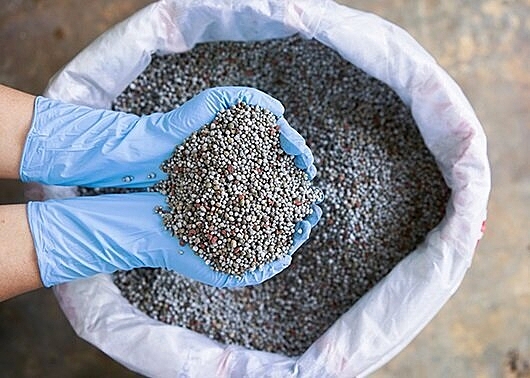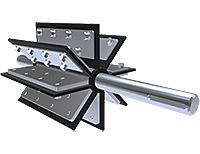
Fertilizer nourishes the soil to help plants grow, but fertilizer mix has a different effect on your processing plant. With abrasive, corrosive, and moisture-absorbing characteristics, fertilizer mix can cause blockages in your conveying line and wear down your equipment faster compared to other materials.
To keep production flowing smoothly and reduce downtime you spend on maintenance, rotary airlock valves must be properly configured to tackle these specific challenges. Here’s what we recommend.
What’s so tricky about fertilizer mix?
With different combinations of potash, phosphate, and ammonium nitrate in the mix — as well as any added minor nutrients, micronutrients, and fillers — your formulation might not look exactly like your neighbor’s, but fertilizer mixes do share some characteristics in common.
Fertilizers tend to be hygroscopic, meaning they absorb moisture more readily than other materials, which makes them more prone to sticking, clumping, and building up in the nooks and crannies of your equipment.
Because of the different chemicals and granules present in fertilizer mix, they are often abrasive or corrosive. Over time, the parts and surfaces of your equipment may wear down more quickly, making it necessary to maintain, repair, and replace it more often.
What’s the best rotary valve for fertilizer mix?
For valves handling fertilizer mix, stainless-steel materials of construction are commonly specified, because they help the sticky fertilizer move smoothly through the valve without building up. For maximum abrasion and corrosion resistance, though, we recommend the XTR Series Valve.
The XTR Series comes with a coating called XTR-Coat, which is specifically designed to combat corrosion and keep the valve in good condition for longer. It delivers the same non-stick performance as stainless-steel, but with an added layer of protection for better conveying efficiency and longevity.
Another option is the Quick-Clean Valve on RotorRails, which speeds up the cleaning process thanks to its rail design. It only takes a few minutes (and zero tools) to open the valve’s housing, wipe it down the internal surfaces, and close it again.
Which valve accessories help convey fertilizer mix?
To get the most longevity from your valve’s rotor, we recommend having it constructed in AR400 steel. This grade has a higher hardness compared to other types of steel, making it ideal for standing up to abrasion and wear.
Because fertilizer mix tends to pack and build up as it’s conveyed, you should also consider equipping your valve with an air purge kit. An air purge kit sends pressurized air to the shaft seals, rotor pockets, or both if you have the combo kit, which will blow material away from these critical areas of the valve instead of building up.
What if my process is different?
Every conveying line has its own quirks, so there may be other valves, coatings, or materials of construction that would work better for you. It’s important to speak with someone who understands your application and can give tailored advice. To get your custom rotary valve configuration, talk to an ACS Valves expert today.


